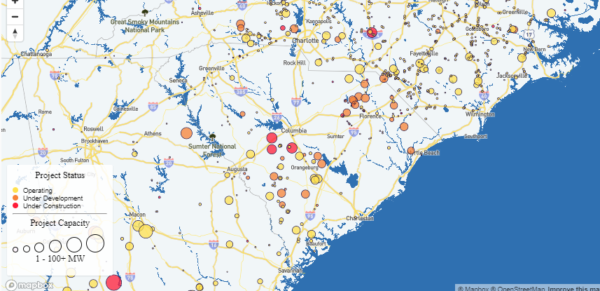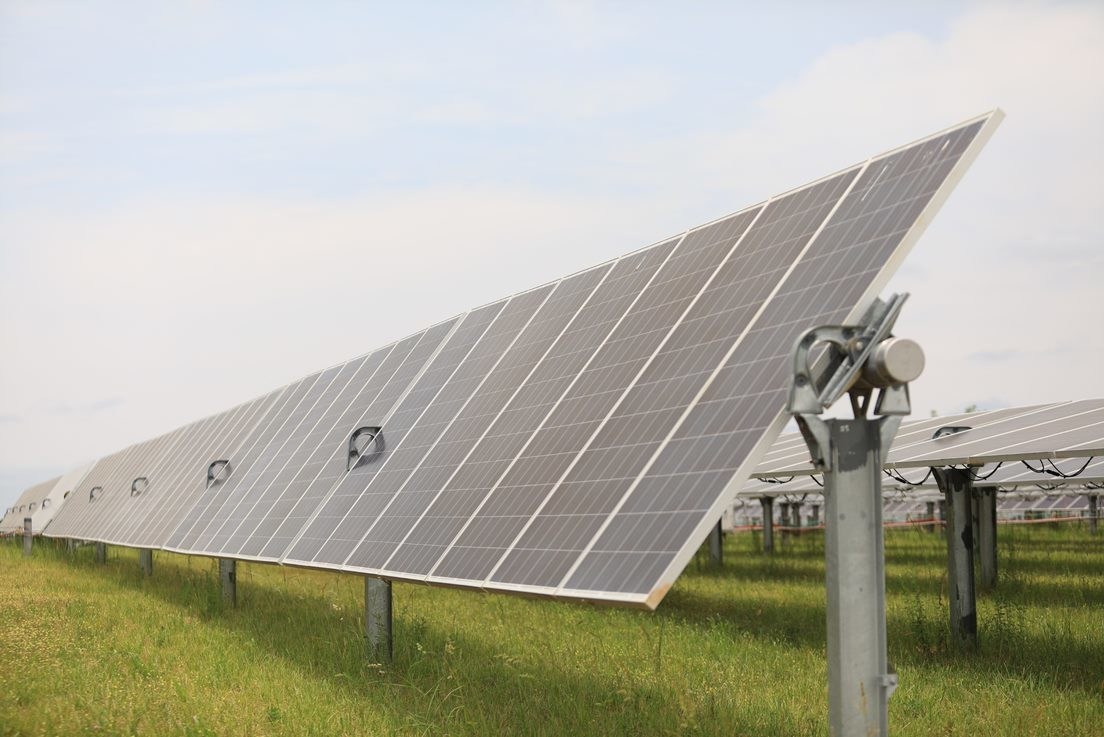South Carolina utility Dominion Energy will add considerable renewable energy generation and grid-balancing energy storage capacity as it has signed a 108 MW solar, 198 MWh energy storage power purchase agreement.
The project is developed by Southern Current, an energyRe company. The 572-acre facility is expected to reach commercial operations and begin delivering clean energy at the grid-scale in 2024. Named Lone Star solar, the project stands alone as the largest battery under development in Dominion Energy South Carolina service territory.
Next steps for the project include acceptance from the Public Service Commission of South Carolina and other related regulatory approvals. Once complete, the project will represent an estimated $200 million invested toward powering the equivalent of about 17,000 homes and businesses.
Lone Star Solar is expected to generate $10 million in local property taxes and create 185 temporary construction jobs. In total, the project is expected to avoid more than 140,000 metric tons of CO2 emissions.
“This agreement will stimulate significant local investment, job creation and emissions reductions across the region. Building on Southern Current’s industry leadership, we are harnessing our expertise and experience to advance renewable energy in the Southeastern United States and beyond,” said Miguel Prado, chief executive officer, energyRe.
Southern Current was acquired by energyRe in Q3 2022, bringing along a portfolio of more than 9 GW of projects in development.
energyRe is advancing several high-profile renewable energy projects across the United States, including Clean Path, NY, which is an $11 billion public-private partnership to develop 3,800 MW of new wind and solar power in New York. The project also includes a 175-mile, underground 1,300 MW HVDC transmission line in the state.
Upon operation in 2027, Clean Path NY is planned to deliver 8 million MWh of electricity annually and reduce fossil fuel-fired electric generation in New York by 22% per year on average.
Distributed joint venture
In a joint venture with Starwood Energy, energyRe also launched Radial Power, a distributed solar developer serving large real estate, commercial and industrial customers.
In partnership with Related Companies, a large-scale real estate investor, the joint venture seeks to build cost-saving distributed solar assets. Starwood and Related Companies together have over 102,000 residences in their portfolios.
Radial Power’s stated goals include leveraging its codified set of proprietary tools and processes to design and deliver a fully financed deployment plan for portfolios with 1,000+ assets of various classes within 45 days from initial contact.
“The increasing cost competitiveness of clean energy technologies, maturing regulatory frameworks, and local, state, and federal incentives serve as tailwinds for adoptions of clean energy solutions,” said John Bates, CEO of Radial Power. “Radial Power seeks to access this enormous market opportunity and to deliver significant economic and environmental value to stakeholders across the board.”
South Carolina solar
South Carolina’s solar industry was essentially born six years ago in 2016, when a boom in both residential and utility-scale solar occurred in the state. Before this, there was an infinitesimal cumulative capacity of solar. In 2020, the state experienced peak deployment, with nearly 600 MW of capacity installed, the vast majority of which was utility-scale.

Image: SEIA
South Carolina ranks among the top three sunniest states east of the Mississippi River along with Florida and Georgia. However, it lags cloudier states like New York and Massachusetts in terms of solar deployment. Thus far, just over 2 GW of solar has been installed in the state.
In total, the Solar Energy Industries Association (SEIA) reports that $2.6 billion has been invested in solar in South Carolina to date. There are 73 solar companies, including 18 manufacturers in the state. SEIA projects an additional 1.4 GW will be installed over the next five years, which would mark a deceleration in deployment compared to the previous five. This projection may not include the increased buildout that is expected following the passage of the Inflation Reduction Act of 2022, which includes a record $370 billion in climate and energy spending.
Read about South Carolina’s solar incentives here.
This content is protected by copyright and may not be reused. If you want to cooperate with us and would like to reuse some of our content, please contact: editors@pv-magazine.com.









By submitting this form you agree to pv magazine using your data for the purposes of publishing your comment.
Your personal data will only be disclosed or otherwise transmitted to third parties for the purposes of spam filtering or if this is necessary for technical maintenance of the website. Any other transfer to third parties will not take place unless this is justified on the basis of applicable data protection regulations or if pv magazine is legally obliged to do so.
You may revoke this consent at any time with effect for the future, in which case your personal data will be deleted immediately. Otherwise, your data will be deleted if pv magazine has processed your request or the purpose of data storage is fulfilled.
Further information on data privacy can be found in our Data Protection Policy.